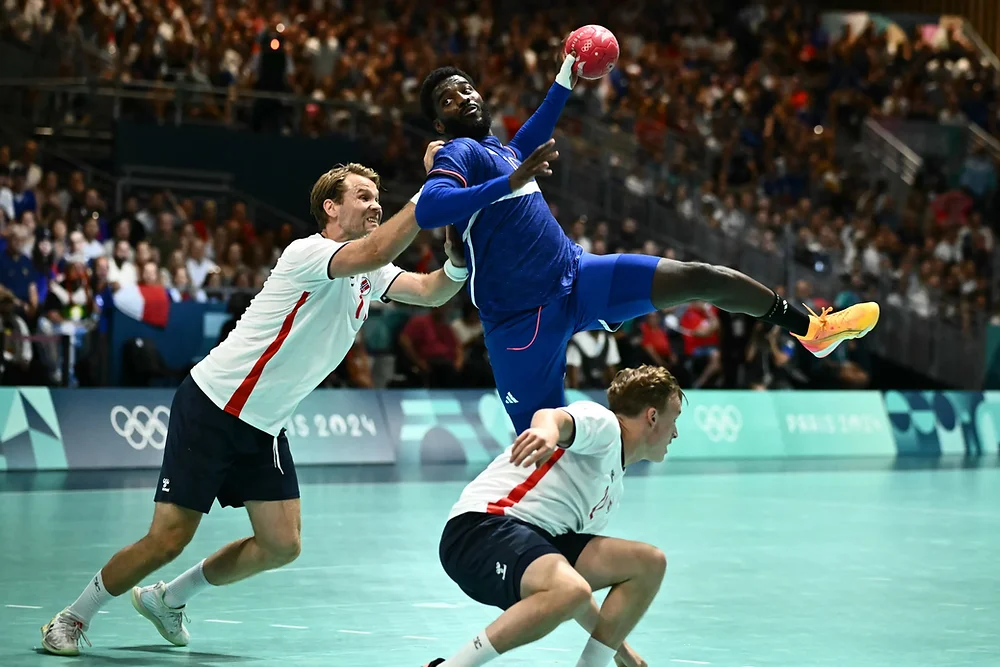What is handball
Introduction to Handball: A Fast-Paced and Thrilling Sport
Handball is a dynamic, high-energy sport that combines elements of soccer, basketball, and water polo. Played by two teams, each consisting of seven players, handball is played on a rectangular court with a goal at each end. The objective is simple: score more goals than the opposing team by throwing a small ball into their goal. The game is fast-paced, requiring a mix of speed, strategy, and teamwork.
The Basics of Handball
In handball, the players use their hands to pass, dribble, and shoot the ball. The court is typically 40 meters long and 20 meters wide, divided into a central playing area and two goal areas. The goalkeepers, one on each team, are the only players allowed to stand inside the goal area and can use any part of their body to prevent goals.
The game begins with a throw-off, where one team passes the ball from the center of the court to start the game or after a goal has been scored. The attacking team moves the ball quickly across the court, aiming to find an opening in the defense, while the defending team tries to block shots and force turnovers. Players are allowed to dribble, but they can only hold the ball for a maximum of three seconds before passing, shooting, or taking a step.
Rules and Scoring
Each team consists of six field players and one goalkeeper. Players use their hands to pass and shoot the ball, while the goalkeeper’s job is to stop the ball from entering the goal. The court is divided into two main sections: the 6-meter area in front of each goal, known as the “goal area,” and the rest of the court where field players can move freely.
Dribbling and Passing: Players can dribble (bounce the ball) or pass it to teammates, but they cannot walk or run with the ball without dribbling for more than three steps.
Shooting: To score, players must throw the ball into the opponent’s goal from outside the 6-meter area. A goal counts as one point.
Goalkeeper Role: The goalkeeper can use any part of their body to block a shot and is the only player allowed in the goal area, although they can leave the area under certain circumstances.
Fouls: Contact with an opposing player is restricted. A foul occurs if a player makes illegal physical contact, or if they enter the goal area. Free throws are awarded for fouls, and more serious infractions may result in penalties or suspensions.
A game is typically played in two halves of 30 minutes each, with a brief break in between. If the score is tied at the end of regulation time, a penalty shootout or extra time may be used to determine the winner.
Strategies and Tactics
Handball is a game of speed, agility, and strategy. Teams must work together to create scoring opportunities while defending their own goal. Here are some common tactics used in handball:
Fast Breaks: Teams often use fast breaks to catch the opposing defense off-guard. By quickly transitioning from defense to offense, a team can create easy scoring chances before the defense has a chance to set up.
Pivoting: The pivot is a player who positions themselves near the goal, attempting to receive passes and create opportunities for shots. The pivot plays a crucial role in breaking down defensive formations.
Block and Counterattack: Teams often use a “block and counterattack” strategy, where players block the opposing team’s shots and immediately launch an attack by passing the ball quickly to teammates in an open position.
Set Plays: Teams can use set plays, similar to those in basketball, to orchestrate specific offensive moves. These plays involve pre-planned passes, cuts, and screens designed to create an open shot.
Handball Around the World
Handball is a global sport with a particularly strong following in Europe, the Middle East, and parts of Asia. In Europe, handball is highly popular, with countries such as France, Denmark, Germany, and Spain consistently producing top-level teams. The International Handball Federation (IHF) governs the sport globally, organizing major competitions such as the IHF World Championship, the Olympic Games, and the European Handball Championship.
In addition to international competitions, handball is played at the club level in leagues throughout Europe, including the prestigious EHF Champions League, where top club teams from across the continent compete for the title of European champions.
The Future of Handball
Handball’s popularity continues to grow, especially in countries where the sport is deeply embedded in local culture. With the increasing accessibility of the sport and its exciting, action-packed nature, more and more people around the world are discovering its appeal. Moreover, with greater investment in youth programs and professional leagues, handball’s future looks promising.
Conclusion
Handball is a thrilling and physically demanding sport that requires skill, strategy, and teamwork. Whether you’re playing or watching, it offers excitement and a unique combination of athleticism and finesse. With its growing popularity, it is clear that handball is a sport that will continue to capture the attention of fans and athletes worldwide for years to come.

